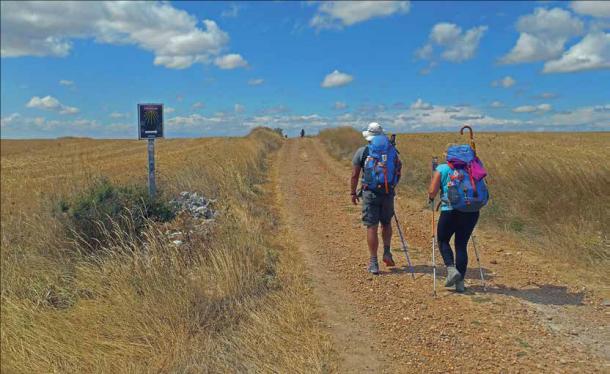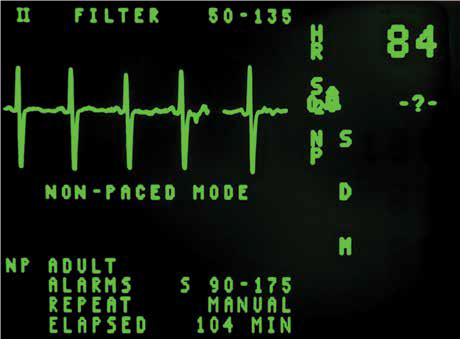
What's new
Walks by the sea
Fred Olsen's Cruise lines for 2025
Christmas books reviews
DVD reviews
Doctor Who
Our new website - Enjoy Britain online www.enjoybritainonline.co.uk/
New CD releases
Discover Knightsbridge, London
Birdwatching and more


Special heart health feature, Graham Sherwood recalls his own heart scare and the lessons he has learned from it.
THE CAMINO de Santiago, often called ‘the walk’, is known in English as the Way of St James. It is a network of pilgrims’ ways or pilgrimages leading to the shrine of the apostle Saint James the Great in the
cathedral of Santiago de Compostela in Galicia in north-western Spain, where tradition holds that the remains of the saint are buried.
I had often toyed with the idea of taking on ‘the walk’, knowing friends who have previously completed it. Little did I know was that ‘Caminos’ come in many different shapes and sizes and sometimes they choose you. Christmas 2019 was great. My wife and I, having been invited to our daughter’s family, now living within sight of our own home, were expecting a relaxed festive break. We were not disappointed.
In addition to this, having decided to lose 60 pounds of stubborn weight some six months before, using the Slimming World system (other weight loss regimes are available), I was feeling fitter than I had done in years. To be honest I was really rather proud of myself. There were rumblings on the news of a strange new virus in the east, but all-in-all that Christmas and New Year were smashing. During January 2020 my breathing became increasingly more difficult. Initially I got puffed out just walking from my daughter’s house, but by the end of the month I could not lie down to sleep.
Something was very wrong, and on January 31 I was in a hospital bed listening to a cardiologist say the two words that I never thought would apply to me, ‘heart failure’. In my ignorance of the term I thought ‘that was that’ and I thought I might die.
In real terms my Camino, or more correctly my ‘patient journey’, began on February 1, 2020, with a discharge from hospital carrying a cocktail of drugs, each with a tailored job of easing my heart’s ability to cope with my day to day exertions.
Prior to the diagnosis of heart failure, I had managed to scrape through 68 years of my life with nought but the very occasional paracetamol for a headache.
What followed over the ensuing months was a seemingly endless procession of small procedures including an echocardiogram, an angiogram, a transoesophageal echocardiograph, a carotid doppler scan, and both MRI and CT scans.
For someone whose only experience of hospital was a one-off repair to a sporting injury, this period was complex and daunting. Doubly daunting because the now infamous global pandemic called Covid-19 had forced these visits to be undertaken alone, without the usual support of a family member or loved one.
It is important to state here that during this period, my prescribed drugs were working well and life (lockdown life anyway) continued pretty much as normal. I had been lucky, for a cardiac patient, to have never experienced any pain that often accompanies such a diagnosis. As a result, a little part of me, deep down, hoped that a medicationonly regime would be my lot. The next consultation was to blow those flimsy hopes completely out of the water.
Seeing and hearing the list of defects within my heart was like listening to an MOT report for a poorly maintained vehicle.
Next came a list of what could be done surgically about them and the different
options or routes that could be followed. Perhaps it was the consultant’s unexpected final words that hit home the hardest. ‘What would you like us to do?’
Naively I assumed I had forfeited the option concerning further developments and to be given responsibility for ‘where we go from here’ temporarily blindsided me. I was told that I was young enough and fit enough to weather an operation. However, the choice wasn’t really a choice at all. I had to get myself sorted out, for my wife and family, so heart surgery it would be.
Then came the wait. However, after only a few weeks and in spite of the imposed Covid-19 restrictions, I was invited to attend a pre-admission clinic, which I was told would take most of the day, listing several new scans and procedures prior to undergoing a full medical, and meetings with the surgical consultant and consultant anaesthetist who would be officiating on the day.

I think the words ‘pre-admission’ served to bring matters into a clearer focus, especially when I was told I might only receive a week’s notice of the operation. In truth the clinic served to galvanise my emotions so much so, that if I had been offered the operation there and then I would have said yes. I was ready – bring it on!
Among the facts, figures, percentages and technical details of risk that one is bombarded with is that of actually not surviving the operation, quite literally dying on the operating table (which is mercifully very low).
However, the mere possibility forced me to consider the impact that such an eventuality would have on my family. As a result, I set about the morbid task of writing letters to my wife and children, only to be opened ‘in the event of’ etc. This was perhaps the most difficult thing I have ever done.
After a short postponement, punctuated by my second Covid-19 vaccination, the date of the planned
surgery arrived and I was asked to present myself the evening before in order to be inducted into the system that would then track my journey until discharge.
I am delighted to report that the operation went well, albeit a few hours longer than planned, around nine hours, and everything that was planned to be undertaken was completed satisfactorily.
After two surprisingly comfortable, if somewhat confusing, days in intensive care, I was transferred to a ward where, with a multitude of wires, drains and other paraphernalia either attached to or inserted into my body, I gradually made a steady recovery.
One complication concerning a conflict between the drugs and my blood unexpectedly hampered me a
little, resulting in an unplanned and longer stay with the meticulous nurses. Much is made of the incredible care and attention freely dispensed by our superb NHS workers and those working on the
cardio-thoracic ward where I was placed were no exception. They were all, quite simply, brilliant.
I have a long and ‘patient’ road to recovery ahead. The Camino de Santiago is a journey of discovery for those who undertake it, many of whom unsure what their journey will uncover.
I don’t know whether I’ll ever get to go on ‘the walk’, although it is still on my mental bucket-list and if anything, this Camino of the Heart that I have recently undertaken may well result in my needing to complete the real thing.
One thing is for sure, the journey I’ve recently been on has shown me many aspects of myself that I never knew existed. My Camino is certainly the longest and hardest journey that I have ever endured but this one was taken of necessity, a journey about life.
National Smile Month
Eye health
Yoga for April 2023
Cheers! Drink plenty of water this Spring
Yoga March 2023
Fit for the Future - keeping healthy as we age
Yoga February 2023
Seniors can learn piano without pain
Hear today...
Stay safe in the sun
Relaxation Tape and Daily Yoga Video
Do you need a private GP
Can private health insurance buy peace of mind?
Prepare for care
Can a carer ever become part of the family?
The mind body connection
Public underestimating summer heat risks
Make your home dementia-friendly
Tango and Yoga... on prescription
Over-65s face ‘hidden’ scourge of malnutrition
Finding Fibre
Hip op hope for cancer patients
Health News: May
Spreading the Massage Messsage
Tackling extremes of pain
Stay active to stop 'senior moments'
B12: The overlooked vitamin
When silence is not golden
How Stressed are you?
Hi-tech revolution for retirement
Maximum energy, minimum effort
Vitamins: Gummies fill the gap
How to keep your prostate healthy
Facing up to phobias
When you've got to go...
Tracking the hidden cancer
Men, women and drugs
The secret killer in your home?
Keeping dementia at bay
Flexible, Friendly, Fitness with FLexercise
Colour me happy
Keeping fit indoors
Living with tinnitus
Put eye health in the driving seat
Opening up hospice care
How will our care homes look in the future?
Easing Migraine Misery
Sweet dreams are made of this
The Hidden Signs of Alcoholism
It's all in the timing
Just Do It
The Age of Anxiety
Online health: Click or Curse?
Nuts reduce risk of killer diseases
It’s never too late for sport
Reduce Your Risk of Cancer
Tooth Discolouration Why It Happens and What You Can Do About It
Easing Leg Cramp Agony
The 10 best health apps
Ear Implant can Change Lives
Easing Pain for IBS sufferers
Staying Moblie
Foods After 50
Look after your legs
Eating for a healthy heart
Here's to better hearing
How to avoid diabetes

Walks by the sea
Fred Olsen's Cruise lines for 2025
Christmas books reviews
DVD reviews
Doctor Who
Our new website - Enjoy Britain online www.enjoybritainonline.co.uk/
New CD releases
Discover Knightsbridge, London
Birdwatching and more